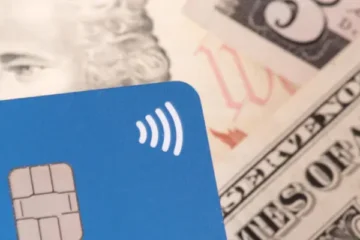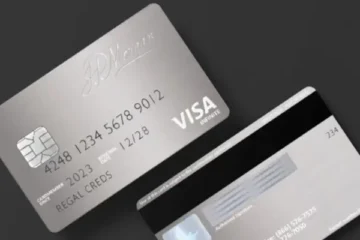What is a Loan and How Does It Work?
You’ve likely heard of “loans,” but do you understand how they actually work? Sometimes, all the complex information can feel overwhelming.
Advertisement
That’s why we’ve prepared this simple and easy-to-understand guide to help you make the best decision. Let’s dive in!
Advertisement
What Is a Loan?
A loan is a financial arrangement where you borrow money from a bank, credit union, or specialized financial company and repay it later with interest.
Think of it as borrowing money from a friend, but with financial institutions, there’s a “service fee” in the form of interest.
Advertisement
In Japan, loans cater to a wide variety of needs, from paying off overdue bills to purchasing a house. The concept is simple: you receive money now and repay it in monthly installments over time.
So, why do so many people take out loans?
- To handle financial emergencies like unexpected medical expenses or repairs.
- To pursue big dreams, such as studying or starting a business.
- To afford expensive purchases like a house or car.
How Does a Loan Work?

The mechanics of a loan are surprisingly straightforward. It all starts with an application. You approach a bank or financial institution and request a loan, providing evidence of your ability to repay.
The lender will review your credit information and income, and if everything checks out, the loan is approved.
Once the funds are deposited into your account, repayment begins. You pay back the borrowed amount (principal) in installments, often with fixed or variable interest rates. Without a proper plan, repaying the loan can become challenging.
To simplify, the loan cycle typically looks like this:
- Apply for a loan.
- The financial institution evaluates your application.
- Funds are deposited into your account.
- Repay the principal amount plus interest within the agreed timeframe.
Main Types of Loans in Japan
Japan offers a wide variety of loans tailored to different needs. Understanding their features is essential to finding the loan that suits you best.
Personal Loans
This is the most common type of loan and can be used for virtually any purpose—paying bills, renovating your home, or even traveling. Usually, no collateral is required, but interest rates tend to be slightly higher.
Home Loans
Designed for purchasing a house, these loans offer lower interest rates. However, since the loan amount is substantial, the approval process is stricter.
Education Loans
Ideal for covering tuition fees or expenses related to specialized training. This is a great option for young people or families looking to invest in education.
Business Loans
Aimed at starting or expanding a business. Financial institutions will assess your business plan and credit history to determine eligibility.
Key Terms and Concepts About Loans
Before committing to a loan, it’s crucial to familiarize yourself with the following key terms commonly found in loan agreements:
- Interest Rate: The additional amount you pay on the borrowed sum. This can be a fixed rate (does not change during the loan period) or a variable rate (fluctuates based on the market).
- Repayment Term: The duration over which you repay the loan. Longer terms reduce monthly payments but increase the total repayment amount.
- Credit History and Eligibility Criteria: A record of your creditworthiness. Financial institutions use this to assess your reliability in repaying the loan.
- Collateral and Guarantor: In some cases, you may need to provide collateral, such as a car or house. Additionally, a guarantor might be required to ensure repayment if you are unable to pay.
How to Apply for a Loan in Japan
Applying for a loan in Japan might seem complicated at first glance, but it’s much simpler than many people think. The key lies in careful preparation and understanding the steps involved.
Steps for Loan Application
1. Determine the Amount You Need
Avoid borrowing more than necessary. The larger the loan, the greater the repayment burden.
2. Choose a Financial Institution
Research banks, credit unions, or specialized financial companies. Using online comparison tools to check interest rates is highly recommended.
3. Prepare Required Documents
Typically, the following documents are needed:
- Identification (Residence Card, Passport, etc.)
- Income Certificate or Payslips
- Credit Information (if required)
4. Submit Your Application
Complete the application form and submit the required documents, either online or in person.
5. Wait for the Review
The financial institution will assess your financial situation and determine whether to approve your application.
6. Receive Funds and Start Repayments
Once approved, the funds will be deposited into your account. Follow the contract terms to begin repayment.
How to Choose the Best Loan
Selecting the right loan is crucial for effective financial management. With so many options available, interest rates, repayment terms, and additional fees can vary significantly between institutions.
To make an informed decision, focus on the following points:
- Compare Interest Rates: Lower rates mean less cost.
- Check the Annual Percentage Rate (APR): Look at the total cost, including fees and other charges, not just the interest rate.
- Review Repayment Terms: Is it a fixed or variable rate? Short-term or long-term repayment?
- Read the Contract Carefully: Understand all terms, including the fine print. Ask questions if something is unclear.
Risks and Responsibilities of Borrowing
Borrowing money may seem like an excellent way to solve financial problems, but it also comes with risks. If repayments are delayed, you may face the following issues:
- Increased late fees and interest charges.
- Negative impact on your credit score.
- Loss of assets provided as collateral (depending on the contract terms).
Therefore, consider borrowing only if you are confident in your ability to repay. Plan your monthly income and expenses carefully, and ensure that your repayment amount does not exceed 30% of your income.
Advantages and Disadvantages of Borrowing
When considering a loan, it’s essential to evaluate both the advantages and disadvantages.
Advantages
- Quickly resolves financial problems.
- Enables you to achieve difficult goals, such as education or purchasing a home.
- Offers flexibility to create a repayment plan that suits your circumstances.
Disadvantages
- Risk of accumulating debt if not managed properly.
- Some loan types come with high interest rates.
- Potential exposure to scams or fraudulent contracts.
Now that you understand all aspects of borrowing, you are ready to make an informed decision. Borrowing can be an excellent solution when needed, but it requires caution.
Before signing any agreement, always review your financial situation, compare your options, and ensure you fully understand all terms.
For more detailed information and helpful tools, continue exploring our site. Wishing you the best of luck!





